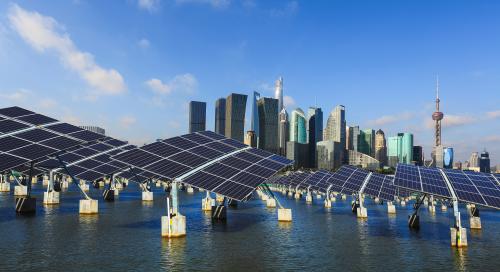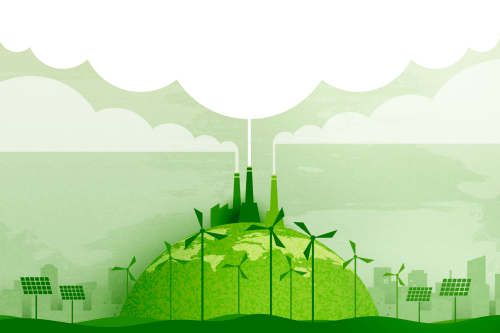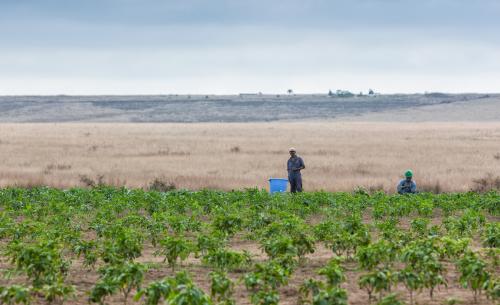Economic growth has taken precedence over environmental protection on the premise that raising living standards for people now must have priority over preserving nature for future generations. But this way of thinking runs into trouble when the destruction of natural capital rises to such a height that it blocks growth itself. The crucial question is whether runaway climate change puts to rest the growth-versus-environment dichotomy, necessitating that they be seen as the two sides of the same coin. The answer is an unambiguous yes at the global level, and a qualified yes at the country level.*
To be clear, it is not the case that poverty reduction has advanced to a point where growth rates can now be sacrificed in the name of reversing climate change. Over 700 million people are estimated to live in extreme poverty (2020). After decades of declines, poverty levels worsened from 2020 to 2022 on account of the pandemic, Russia’s war in Ukraine, extreme climate disasters, and the global economic slowdown. Such swings put the spotlight on the millions who move in and out of poverty following shocks. Furthermore, improvements in well-being have a long way to go: For example, nearly 3 billion people cook with traditional fuels, killing millions and endangering health through indoor pollution.
But it is the case that the perspective on growth and poverty reduction on the one side versus environmental protection and climate action on the other needs to change as decades of environmental destruction have made countries extremely vulnerable to shocks. Poorer countries and poorer segments of the population are the most hurt. Climate action is not only complementary to poverty reduction but in key respects, the former is a necessary condition for the latter. When one-third of Pakistan goes underwater and 10 percent of GDP is wiped out, building flood defenses becomes synonymous with poverty reduction.
Climate action is not only complementary to poverty reduction but in key respects, the former is a necessary condition for the latter.
Nevertheless, climate adaptation can be seen as a less obvious step in growth and poverty reduction than, say, cutting indoor pollution as the latter can more clearly be seen as human-made and with a direct attribution of cause and effect. If people think that the extremity of the Pakistan floods or the California fires were caused by natural factors, then spending on flood defenses, let alone on decarbonization, may be seen as ill-advised investments. But scientists are clear that extreme climate disasters are human-caused, and they are proving catastrophic for growth and poverty reduction.
The story is more complicated when it comes to climate mitigation as compared to adaptation. The transition to low-carbon energy has short-term costs that can present an apparent trade-off between saving lives today and saving lives tomorrow. That trade-off is more glaring for low-income countries because the costs of transition for them are (proportionately) higher. This differentiation of low-income nations in this respect is quite apart from the issue of climate justice that asks that high-income nations bear the brunt of the mitigation costs everywhere. That argument is salient as 74 of the poorest member countries of the International Development Association (IDA) account for less than 10 percent of the GHGs but are hardest hit by climate change.
That said, to stabilize climate change, all countries will need to contribute to a global net zero. If countries continue the current path, global temperatures will rise by over 3 degrees Celsius compared to pre-industrial levels, and poverty reduction becomes a moot point. The case for poorer nations investing in mitigation too becomes stronger as technologies for renewable energy become even more competitive than fossil fuels, and if rich nations step up low-cost financing of climate investments.
The conclusion in favor of seeing growth and poverty reduction as complementary with environmental protection and climate action for the most part needs to be underpinned by economic analysis and policy advice. Investments must be put to the test of social cost-benefit analysis, that includes valuation of environmental damages and discount rates that appreciate the necessity of protecting natural capital for future years. Such analysis can be aided by complementing GDP measures with adjustments of the damages from carbon-intensive growth, for example, in UNDP’s planetary effect-adjusted human development index.
At the end of the day, the debate on growth versus the environment can be aided by qualifying the use of GDP growth that ignores the damages that are embedded in it. This shortcoming of the GDP yardstick feeds the mismatch between time horizons—of policymaking to boost short-term growth on the one side and the obligations of sustainable climate policy on the other. Qualifying the GDP measure will also help shape public opinion, the final arbiter of policy directions, in favor of climate action and environmental protection.
* Based on the author’s book Risk and Resilience in the Era of Climate Change, Palgrave Macmillan, 2023.







Commentary
The truth about climate action versus economic growth
May 3, 2023